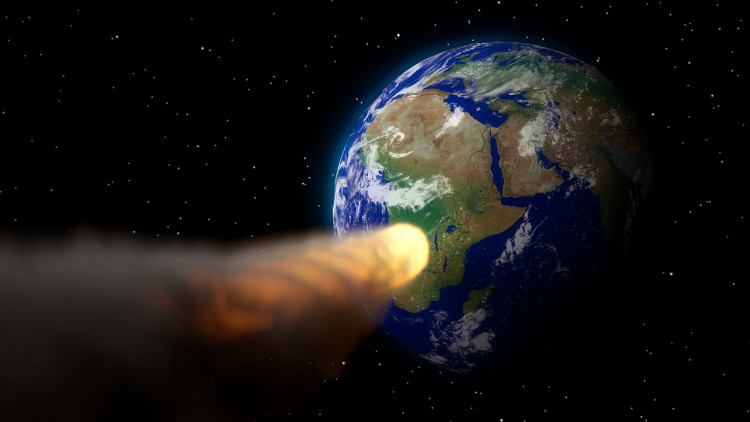Data from NASA reveals an asteroid dubbed 2010 JE87 will barrel past Earth today, Jan. 25, at a staggering velocity of around 33,400 miles per hour, which is roughly 45 times faster than the speed of sound.
On its close approach, the asteroid would also travel significantly closer to our planet-coming at a minimum distance of about 3.7 million miles or about 15 times the average distance between Earth and Moon.
Asteroid 2010 JE87 is known as near-earth objects (NEOs) because their journeys around the sun carry them within 30 million miles of our planet's orbit. Some NEOs-the vast majority of which are asteroids-are alluded to as "potentially hazardous" because they have such characteristics.
A near-earth asteroid is considered 'potentially hazardous' if its orbit is entering the Earth's orbit within approximately 4.6 million miles and its size is greater than approximately 140 meters. Currently, scientists have found about 25.000 NEOs, more than 90% of which are more than one kilometer (0.62 miles) in diameter, according to the CNEOS.
Over the weekend, Earth has had another near miss with an asteroid known as the 2020 PP, which is as tall as the Empire State Building in New York. However, even at its nearest point, the asteroid was still 4.3 million miles away from us.
2020 PP is about 370m (1,213 feet) in diameter and flies at a speed of about 18,700 miles per hour.
In 66 million years, no asteroid has struck Earth since the one that caused the dinosaurs to become extinct. The asteroid struck at high speed and effectively vaporized. It made a massive crater, so there was complete destruction in the surrounding area. A massive blast wave and heatwave went out and threw large quantities of material into the atmosphere.
It sent soot to fly around the globe. It did not entirely block the Sun, but it limited the amount of light that penetrated the surface of the Earth. So it had an effect on plant growth.
The impact site, known as the Chicxulub crater, is situated on the Yucatán Peninsula in Mexico. It is believed that the asteroid was between 10 and 15 kilometers wide, but the speed of its impact caused the formation of a much larger crater, 150 kilometers in diameter, making it the second-largest crater on Earth, next to the Vredefort crater, created when an asteroid measuring at least 10 kilometers landed on Earth an estimated 2 billion years ago.




